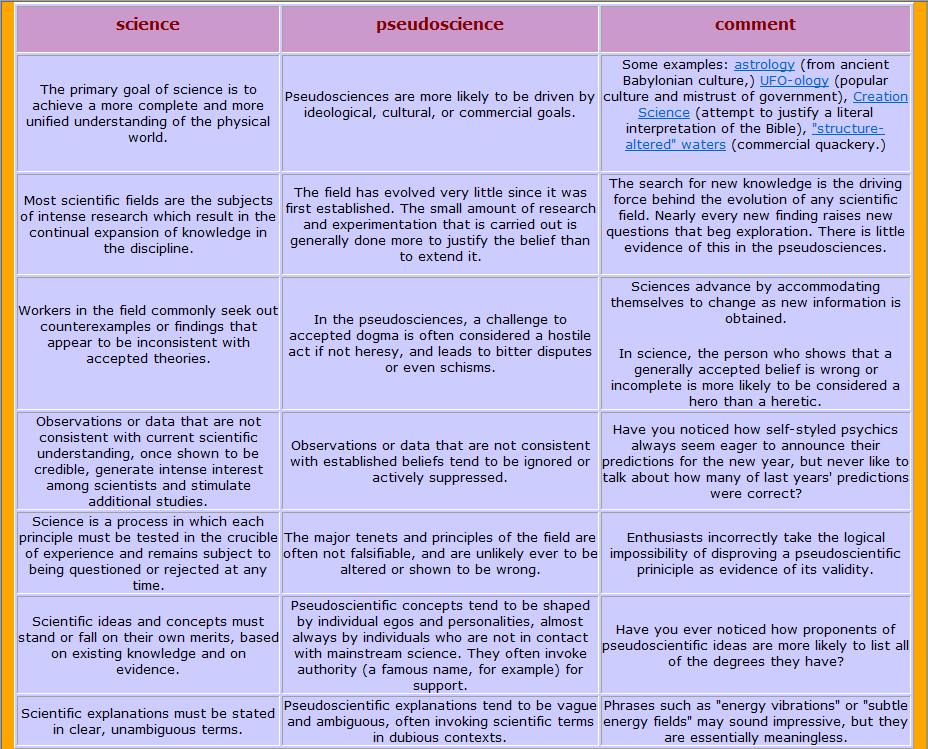
Distinguishing Science from Pseudoscience
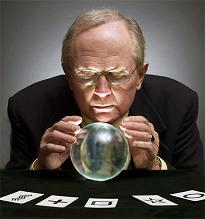
 |
Distinguishing Science from Pseudoscience |
 |
The word “pseudo” means fake, and the surest way to spot a fake is to know as much as possible about the real thing, in this case science itself. When we speak of knowing science we do not mean simply knowing scientific facts (e.g., the distance from earth to sun; the age of the earth; the distinction between mammal and reptile, etc.) We mean that one must clearly understand the nature of science itself— the criteria of valid evidence, the design of meaningful experiments, the weighing of possibilities, the testing of hypotheses, the establishment of useful theories, the many aspects of the methods of science which make it possible to draw accurate, reliable, meaningful conclusions about the phenomena of the physical universe.
However, the media provide a continuous bombardment of sheer nonsense, misinformation, fantasy and confusion—all proclaimed to be “true facts.” Sifting sense from nonsense is an almost overwhelming job.
It is therefore useful to consider some of the earmarks of pseudoscience. The substitution of fantasy and nonsense for fact leaves behind many different clues and signs that almost anyone can readily detect. Below are listed some of the most common characteristics of pseudoscience. The presence of any one or more of these symptoms in any material in question marks it conclusively as pseudoscience. On the other hand, material displaying none of these flaws might still be pseudoscience— the pseudoscientists are inventing new ways to fool themselves nearly every day. What we have here is a set of sufficient, rather than necessary, conditions for pseudoscience.
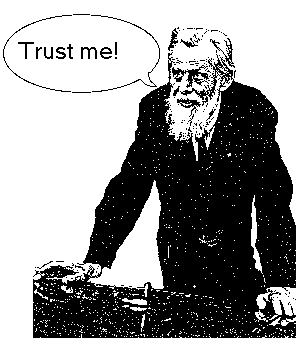 |
PSEUDOSCIENCE displays a remarkable and characteristic indifference to fact. Writers tend simply to make up bogus “facts”— what Norman Mailer calls “factoids”— where needed, instead of going to the trouble of consulting reliable reference works, much less investigating directly. Yet these fictitious facts are often central to the pseudoscientist’s argument and conclusions! This can also be seen in the fact that pseudoscientists never revise. The first edition of any pseudoscience book is almost always the last, even though the book may go through innumerable new printings, over decades or centuries. Even a book with obvious mistakes, errors, and misprints on every page is just reprinted as it is, over and over. Compare to college science textbooks, which usually see a new edition every few years because of the rapid accumulation of new facts, ideas, discoveries, experiments and insights in science. |
| PSEUDOSCIENCE “research” is almost invariably exegesis. That is, the pseudoscientist clips new or old newspaper reports, collects hearsay and questionable memories, reads other pseudoscience books, or thumbs through ancient religious or mythological works. The pseudoscientist never or rarely ever makes an independent investigation to check his sources. They are taken at face value, or even better interpreted as “symbolic,” so that the pseudoscientist can use them as a kind of Rorshach inkblot— reading into the myths and old texts anything he wants to find in them. Some areas of pseudoscience are generated by very simplistic “literalism”— the use of inherited “sacred texts” as if they were contemporary science textbooks, a practice that leads to the flat earth, the earth at the center of the universe, Creationism, Intelligent Design and a number of other completely foolish but resolutely traditional claims about man and nature. |
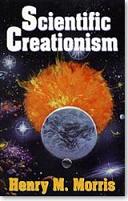 |
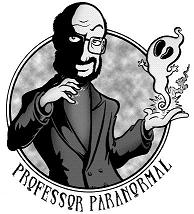 |
| PSEUDOSCIENCE shows a total indifference to criteria of valid evidence. The emphasis is not on meaningful, controlled, repeatable scientific experiments— instead, it is on unverifiable eyewitness testimony, stories, faked footprints, blurry photos, and tall tales, hearsay, rumor, and dubious anecdotes. Genuine modern scientific literature is not cited. Real research is never done. Generally pseudoscientists never present any valid evidence of any kind whatsoever for their claims. One of the most bizarre recent tactics of pseudoscientists is to publish a novel, a work of fiction in which essentially everything is made up by the author— as usual in works of fiction!— but then to turn directly around and treat the completely made-up material as if it were actual, factual and researched. Recent examples of this tactic are The Celestine Prophecy, by James Redfield (1994), and The Da Vinci Code, by Dan Brown (2003). This is really having your cake and eating it too, because the authors, when taken to task for gross errors and mis-statements, calmly say, “Can't you read? It's fiction, not non-fiction,” and yet when not taken to task for equally gross errors, sneakily treat them as established facts and build upon them to generate yet more best-selling books. |
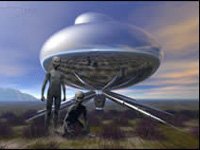  |
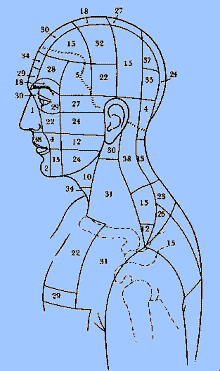 |
PSEUDOSCIENCE relies heavily on subjective validation. Joe Blow puts jello on his head and his headache goes away. To pseudoscience this means jello cures headaches. To science this means nothing, since no experiment was done. Many things were going on when Joe Blow’s headache went away— the moon was full, a bird flew overhead, the window was open, Joe had on his red shirt, etc.— and his headache would have gone away eventually in any case, no matter what. Modine Flark reads her newspaper horoscope and says there must be something to astrology because the horoscope describes her perfectly. But when we read it we see it is a perfectly generally true statement that describes just about every human who has ever lived, and has nothing to do with Modine or her birth-stars. These are examples of subjective validation, one of the main foundations of popular support for pseudoscience. Essentially all of medical quackery (aka “alternative medicine”) relies on subjective validation entirely for its continued existence. A controlled experiment to study the effectiveness of a headache remedy, for example, would put a large number— thousands or tens of thousands— of people suffering from headaches in identical circumstances, except for the presence or absence of the remedy it is desired to test, and compare the results… which would then have some chance of being meaningful. Subjective validation renders such studies meaningless unless they follow a so-called Double-Blind protocol, which insures that no one involved in the study knows what the results “should be.” That is, no one in the study should know until final results have been tabulated which patients took the remedy to be tested, and which patients took an identical-appearing placebo, known to have no effect on headaches. |
PSEUDOSCIENCE depends on arbitrary conventions of human culture, rather than on unchanging regularities of nature. For instance, the interpretations of astrology depend on the names of things, which are accidental and vary from culture to culture. If the ancients had given the name Mars to the planet we call Jupiter, and vice versa, astronomy could care less… but astrology would be totally different, because it depends solely on the cultural baggage carried by the name and has nothing to do with the physical properties of the actual planet itself. |
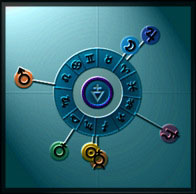 |
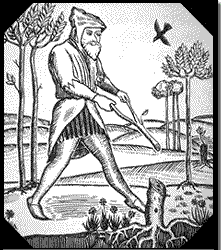 |
PSEUDOSCIENCE always achieves a reduction to absurdity if pursued far enough. Maybe dowsers can somehow sense the presence of water or minerals under a field, but almost all claim they can dowse equally well from a map! Maybe Uri Geller is “psychic,” but are his powers really beamed to him on a radio link with a flying saucer from the planet Hoova, as Uri used to claim? Maybe plants are “psychic,” but why does a bowl of (inorganic) mud respond in exactly the same way, in the same bogus “experiment?” A local psychic says she can commune mentally with your pet— but she also says a photo or fax or computer-printout image of the pet works just as well as the pet itself for her communing! |
| PSEUDOSCIENCE always avoids putting its claims to a meaningful test. Pseudoscientists never carry out careful, methodical, convincing experiments themselves— and they also generally ignore results of such experiments that are carried out by scientists. Pseudoscientists also never follow up. If one pseudoscientist claims to have done an experiment (e.g., the “lost" biorhythm studies of Hermann Swoboda that are an alleged basis of the modern pseudoscience of biorhythms), no other pseudoscientist ever tries to duplicate it or to check his supposed results, even (and especially) when the original results are lost or questionable! Further, where a pseudoscientist claims to have done an experiment with a remarkable result, he himself almost never repeats it to check his results and procedures. This is in extreme contrast with science, where crucial experiments are performed over and over, by scientists all over the world, with ever-increasing precision. When pseudoscientists became extremely excited by fuzzy 1980s photos of a “face on Mars,” they somehow never wanted to look at or even hear about 1990s and later photos which show the area with much sharper resolution, and do not show any “face.” Those who believed that the measurements of the Pyramid of Cheops contain secret information encoded by Gods or Space Aliens were somehow never found making any measurements themselves. Nor did it ever occur to practitioners of “theraputic touch,” which involves ritual hand-waving to manipulate and smooth the “human energy field,” to demonstrate experimentally that such a field (completely unknown to science) actually exists. Believers in the supernatural wonders of crop circles never bother to take a clothesline and a broomstick and see how simple it is to make a circle precisely like the ones they find “inexplicable.” Those who say the UFO photos of George Adamski or Billy Meier or Ed Walters convince them absolutely that UFOs are real never bother to spend the 60 minutes or so it takes to fabricate a very similar UFO and take it out and make a very similar photo. |
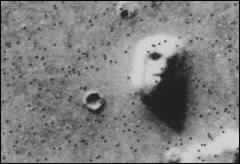  |
PSEUDOSCIENCE often contradicts itself, even in its own terms. Such logical contradictions are simply ignored or rationalized away. In a meaningful description of the physical world we live in, mathematical or factual or logical contradictions simply could not exist. In pseudoscience, they are par for the course! We should not be surprised when a book on dowsing for water, in Chapter 1, assures us that dowsers prefer newly-cut twigs, because only “still living” wood can channel and focus the “earth radiation” used in dowsing, while Chapter 5 states that nearly all dowsers use metal or plastic rods!
PSEUDOSCIENCE deliberately creates mystery where none exists, by omitting crucial information, background, and important details. Anything can be made “mysterious,” if you omit to tell what is known about it, or present completely imaginary details. The “Bermuda Triangle” and “Sea Mystery” books are classic examples of this tactic, as are most books on haunted houses.
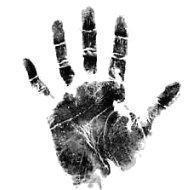 |
PSEUDOSCIENCE does not progress. There are fads, and a pseudoscientist may switch from one fad to another (from ghosts to ESP research, from flying saucers to psychic studies, from ESP research to looking for Bigfoot). But within a given topic there is no progress made, no new information uncovered; new theories are not forthcoming; old concepts are never modified or discarded in light of new discoveries, since there are no new discoveries for pseudoscience. The older the idea, the more respect is given it. ESP experiments started at about the same time as research into the nature of electromagnetic radiation. They're still guessing cards in the ESP labs and yet applications of electromagnetism have completely revolutionized the world, time and time again, since the 1880s. No natural phenomena or processes previously unknown to science have ever been discovered by pseudoscientists. Indeed, pseudoscientists almost invariably deal with phenomena well known to scientists, but little known to the general public— so that the public will swallow the total misrepresentations of the phenomena that the pseudoscientist wants to make. Classic examples: firewalking, Kirlian and orb photography, “psychic motors.” |
PSEUDOSCIENCE persuades using misinformation, appeals to widespread belief, rhetoric, propaganda, and misrepresentation, rather than presenting valid evidence (which presumably does not exist). Pseudoscience books offer examples of almost every kind of fallacy of logic and reason known to scholars, and have invented some new ones of their own. A favorite device is the non sequitur. Pseudoscientists also love the “Galileo Argument.” This consists of the pseudoscientist comparing himself to Galileo, and saying that just as the pseudoscientist is believed to be wrong, so Galileo was thought wrong by his contemporaries … therefore the pseudoscientist must be right too, just as Galileo was. Clearly the conclusion does not follow! What is more, anyone who has ever heard of Galileo must be aware that Galileo’s ideas were tested, verified, and accepted promptly by his scientific colleagues. It was the established religion which rejected Galileo’s findings, preferring instead a familiar pseudoscience which Galileo’s findings contradicted. Pseudoscientists are fond of the term “proof,” as in, “I'll pay anyone $10,000 if they can prove Bigfoot does not exist!” Or, “ ...if you can prove the earth revolves around the sun,” or “ ...if you can prove that at least some UFOs are not spacecraft from other worlds.” The money is safe, because the concept of a “proof” comes from mathematics and formal logic, and has no counterpart in any description of things, phenomena and processes in our real world. A late-20th-Century magician and mentalist offered $10,000 to anyone who can prove that hypnosis exists. He's in no danger of having to pay up, but his money would be just as secure if he offered $10,000 to anyone who can prove that hypnosis does not exist!
| PSEUDOSCIENCE argues from ignorance, an elementary fallacy. That is, pseudoscientists base their claims on incompleteness of information about nature, rather than on what is known at present. But no claim can possibly be supported by lack of information. The fact that Don Dullard saw something in the sky he didn’t recognize means just that… he didn’t recognize what he saw. We cannot use this fact as evidence that flying saucers are from outer space, since we have no evidence he saw a flying saucer— or anything else! Maybe he saw a ghost! Advocates of “Intelligent Design” claim, without evidence, that science will “never” be able to understand certain features of biological systems. Really? “Never” is a long time. The phrase “Science cannot explain…” is extremely common in pseudoscience literature. In many cases, the fact is that science has no interest in the supposed phenomenon because there is no evidence it exists; in other cases, the scientific explanation is well known and well established, but the pseudoscientist is not aware of it or deliberately ignores it to create mystery. Many pseudoscientific labels— ghosts, UFOs, ESP— are just names for a state of complete ignorance of what, if anything, is being labelled. Could the woods be full of unknown monsters, the rivers full of unknown monsters? Zoologists don't think so; they've been there repeatedly to look, and it's their profession to find and study new animals. To the pseudoscientist, the absence of evidence for some monster is itself a kind of “proof” the monster exists! |
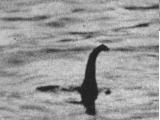 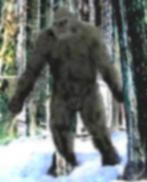 |
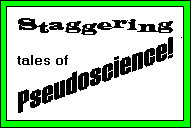 |
PSEUDOSCIENCE argues from alleged exceptions, errors, anomalies, strange or paranormal events, and suspect claims— rather than from well-established regularities of nature. The experience of scientists over the past 400 years is that claims and reports which describe well-understood objects behaving in strange and incomprehensible ways tend to reduce upon investigation to deliberate frauds, honest mistakes, garbled accounts, misinterpretations, outright fabrications, and stupid blunders. It is not wise to accept such reports at face value, without checking them. Pseudoscientists always take such reports as literally true, without independent verification. |
| PSEUDOSCIENCE appeals to false authority, to emotion, to sentiment, or to distrust of established fact. A high school dropout is accepted as an expert on archaeology, though he has never made any study of it! A psychoanalyst is accepted as an expert on all of human history, not to mention physics, astronomy, and mythology— though his claims are inconsistent with everything known in all four fields! A show business celebrity swears it’s true, so it must be. A physicist says psychic Smoori Mellar couldn’t possibly have fooled him with simple magic tricks, although the physicist knows nothing about magic and sleight of hand. Emotional appeals are common: “If it makes you feel good, it must be true.” “In your heart, you know it’s right.” “Follow your bliss!” “Use your intuition!” Pseudoscientists are fond of imaginary conspiracies: “There’s plenty of evidence for flying saucers but the government keeps it secret.” They almost always argue from irrelevancies: “Scientists don’t know everything!”— but perhaps we weren’t talking about everything, maybe we were discussing the evidence for the tooth fairy and Santa Claus! |
 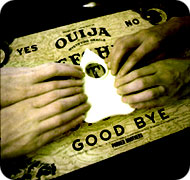 |
PSEUDOSCIENCE often pretends to be one side of a legitimate scientifc controversy. That is, pseudoscientists like to pretend that “the jury is still out,” and that “further research” is needed to clarify the validity of their beliefs. This is essentially never the case. There is no controversy among astronomers concerning astrology— they unanimously agree it is nonsense. There is no controversy among physicists concerning Velikovsky's ideas— they are unanimously condemned as simply wrong. There is no controversy among biologists regarding “Intelligent Design”— it is dismissed as a set of religion-based beliefs empty of scientific content. There is no case known to me in which a pseudoscientist's claims have taken advantage of any genuine scientific controversy. Instead, pseudoscientists operate entirely outside science, and their claims and beliefs are not relevant to any known scientific puzzle or uncertainty. One frightening trend observed more and more strongly during the last half of the 20th Century was the incorporation of contrarian pseudoscience into the core beliefs of various fundamentalist religions, so that today a fundamentalist is almost certain to deny the facts of global warming, biological evolution, human origins, etc., and to affirm that basic scientific research is essentially of no value.
There is general agreement among interested observers that, over the past two decades, Americans have grown increasingly indifferent to the often-demonstrated fact of their ignorance of even the most basic scientific discoveries of the last four centuries, and increasingly unconcerned that US K-12 students generally tie for last place in knowledge of math and science, in comparisons among 70 or more nations. An actual and naked hostility to science and scholarship has been tied up seemingly inextricably with political and religious ultra-conservatism. This attitude of distrust and dislike of science, mathematics and rational thought in general very obviously has an entirely negative educational impact. And ultimately, such hostile attitudes must result in an ever-increasing popularity for various pseudosciences, particularly those which can adapt themselves to the prevailing political and religious dogmas.
| PSEUDOSCIENCE makes extraordinary claims and advances fantastic theories that are in contradiction to what is known about nature. Not only is no evidence offered that the claim is true, the problem of how all previous investigations led to precisely opposite conclusions is ignored totally. (“Flying saucers have to come from somewhere—so the earth is hollow, and they come from inside.” “This electric spark I’m making with this electrical apparatus is actually not a spark at all, but rather a supernatural manifestation of psycho-spiritual energy.” “Every human is surrounded by an impalpable aura of electromagnetic energy, the auric egg of the ancient Hindu seers, which mirrors the human’s every mood and condition.” “Dowsing is possible because of the mysterious ‘Earth Radiation,’ which can only be detected by dowsers!” “This dog knows when its owner leaves her business miles away and always goes to the window right then to wait for her, because it senses the metahuman supermorphogenic force field!" Gosh, what if it just goes to the window every few minutes all day long?) The very word theory is one of the most often misused by pseudoscience. In science, a theory is a detailed, quantitative description of an observed physical process of nature. For example, in physics, a theory of gravity would be a mathematically-expressed law that allowed the calculation of the gravitational force in any specific, given circumstance. In zoology, a theory of evolution would offer a description of a detailed, testable set of processes that result in the frequently observed origin of new species of living thing. You can't describe a process that is not there to be described, so there is hardly any concept more alien to pseudoscience than a scientific theory! Pseudoscientists never offer theories... they usually offer retreaded mythology. |
 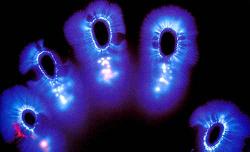 |
 |
PSEUDOSCIENCE makes heavy use of an invented vocabulary in which the new terms introduced do not have precise or unambiguous definitions, and most have no definitions at all. The listener is forced to interpret the statements according to his or her own preconceptions. What, for instance, is “biocosmic radiation energy?” Or a “psychotronic amplification system?” Or the “Intelligent Design Hypothesis?" Or the “Zero Point Vacuum Free Cosmic Energy Motor?" Or “craniosacral theraputic osteopathy”? By spouting gibberish that has a vaguely “technical” sound, the pseudoscientists and crackpots believe they imitate the jargon of actual scientific and technical fields. Pseudoscientists also like to take terms from actual science, such as “energy,” and drain them totally of meaning, then use them as senseless, referentless buzzwords. Quack “healers” babble a lot about energy, but nothing they say has anything whatsoever to do with physics or biology or with any aspect of reality. |
A more general example of this fallacy is often called “cherry picking.” There are many "scientific studies" being published all the time, and they vary widely in reliability and methodology. Thus, you can easily find at least one study somewhere that "proves" that drinking 6 or more cups of coffee a day reduces the chance of a heart attack by 60%, that using a mobile phone more than 2 hours a day reduces the chance of developing Alzheimer's Disease by 60%, that eating a pound of dark chocolate per day reduces your chance of ovarian cancer by 60%, that chewing a plug of tobacco at least once per week reduces the incidence of dental caries by 60%... or whatever else you want!
[Crackpot critics of science generally misuse the “cherry-picking” term. Basically they seem to think that sorting out the bad data and tossing it away consists of cherry picking, and leads to all well-established scientific results being questionable. What a real cherry-picker does is pick out only bad data and ignore all the rest. And in fact the real cherry-picker ignores most of the bad data too, only pointing to the one or two goofy examples that he thinks offer support to his favorite crazy idea.]
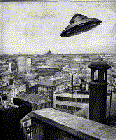 |
PSEUDOSCIENCE claims that the phenomena it studies are “jealous.” The phenomena appear only under certain vaguely specified but vital conditions (i.e., when no doubters or skeptics are present; when no experts are present; when nobody is watching; when the “vibes” are right; only once in human history.) The attitude of science is that all phenomena must be capable of being studied by anyone with the proper equipment, and that all procedurally valid studies must give consistent results. No actual known natural phenomenon is “jealous” in this way. There is no way to construct a TV set or a radio or a DVD player or a computer that will function only when no skeptics are present! A man who claims to be a concert-class violinist, but does not appear to have ever owned a violin and who refuses to play when anyone is around who might hear him, is most likely lying about his ability to play the violin. |
| PSEUDOSCIENCE “explanations” tend to be by scenario. That is, we are told a story, but we are told nothing else; we have no description of any possible physical process. For instance, pseudoscientist Velikovsky claimed that another planet passing near the earth caused the earth’s spin axis to flip upside down. This is all he said. He gave no mechanisms. But the mechanism is all-important, because the laws of physics rule out the process as impossible. That is, the approach of another planet cannot cause a planet’s spin axis to flip 180 degrees. If Velikovsky had discovered some way that one planet could flip another’s spin axis, he would presumably have described the mechanism by which it can happen. The bald statement itself, without the underlying mechanism, conveys no information at all. Again, Velikovsky says that Venus was once a comet, and this comet was spewed out of a volcano on Jupiter. Since planets in no way resemble comets, which have been known since 1950 to consist of rock/ice snowball-like debris, and which in turn have no connection whatsoever to volcanoes, and since Jupiter is not known to have volcanoes anyway (or even a solid surface!), there is no actual physical process underlying Velikovsky’s assertions. He just gives us words, related to one another within a sentence… but the relations are alien to the universe we actually live in, and no explanation for how these relations work or can exist is given. We have stories, but never theories. The literary genre known as science fiction has been invaluable to pseudoscience for more than 150 years, in providing fact-free scenarios which the pseudoscientist can adapt readily, and which have the advantage of being already familiar to the public through use and reuse in 20th Century films and television series. |
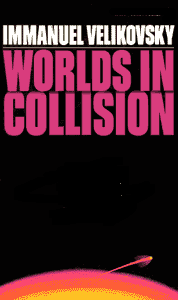 |
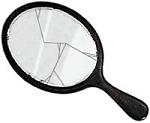 |
PSEUDOSCIENTISTS often appeal to the ancient human habit of magical thinking. Magic, sorcery, witchcraft— these are based on spurious similarity, false analogy, false cause-and-effect connections, etc. That is, inexplicable influences and connections between things are assumed from the beginning— not found by investigation. (If you step on a crack in the sidewalk without saying a magic word, your mother will crack a bone in her body; eating heart-shaped leaves is good for heart ailments; shining red light on the body increases blood production; rams are aggressive so someone born in the Sign of the Ram is aggressive; fish are “brain food” because the meat of the fish resembles brain tissue, etc.) So-called herbal remedies and supplements sold over-the-counter for a variety of ailments in almost every grocery store and drug store are not supported in any case by any scientific research whatsoever, but rather entirely by folklore, tradition and magical thinking. Yet such supplements often do contain active ingredients that have strong physiological effects, almost all dangerous, almost none desirable, and never mentioned on the product label! The result: a genuine public health crisis, that makes no headlines at all unless a celebrity or athlete happens to die of poisoning. |
| PSEUDOSCIENCE relies heavily on anachronistic thinking. The older the idea, the more attractive it is to pseudoscience— it’s the wisdom of the ancients!— very especially if the idea is transparently wrong and has been discarded by science for centuries. Bogus wisdom of the ancients, as in Theosophy, whose supposedly ancient sacred texts were actually inventions of Madame Helena P. Blavatsky in the late 19th Century, is just as effective as authentic holy ravings from 2000 or 3000 years ago. The claim of being ancient is all that is important. When Dolores Krieger invented the pseudoscience of Theraputic Touch, she initially used the vocabulary of Theosophy to describe the imaginary mechanism that was the basis of the quack therapy, but a few years later she swapped traditions by switching completely to the vocabulary of traditional Chinese healing magic. One tradition is as good as any other, but there has to be a tradition! |
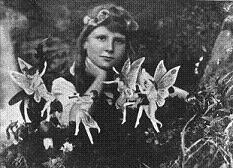 |
We have so far been discussing pseudoscience without making any direct comparison with science itself. However, it is informative to make a direct comparison, feature by feature—
 vs. Pseudoscience!
vs. Pseudoscience!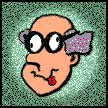
SCIENCE: The literature is written for scientists. There is peer review, and there are rigorous standards for honesty and accuracy.
PSEUDOSCIENCE: The literature is aimed at the general public. There is no review, no standards, no pre-publication verification, no demand for accuracy and precision.
SCIENCE: Reproducible, reliable results are demanded; experiments must be precisely described so that they can be duplicated exactly or improved upon in sensitivity and volume of cases or events.
PSEUDOSCIENCE: Results cannot be reproduced or verified. Studies, if any, are always so vaguely described that one can't figure out just what was actually done or how it was done.
SCIENCE: Failures are searched for and studied closely, since incorrect theories can often make correct predictions by accident but no correct theory will make incorrect predictions.
PSEUDOSCIENCE: Failures are ignored, excused, hidden, lied about, discounted, explained away, rationalized, forgotten, avoided at all costs.
SCIENCE: As time goes on, more and more is learned about the physical processes under study.
PSEUDOSCIENCE: No actual physical phenomena or processes are ever found, noticed or studied. No progress is made; nothing concrete is learned.
SCIENCE: Individual defects, idiosyncrasies and blunders of investigators average out— do not affect the real “signal” under study.
PSEUDOSCIENCE: Individual defects, idiosyncrasies and blunders of investigators provide the only "signals" ever seen— the average is zero.
SCIENCE: Convinces by appeal to the evidence, by arguments based upon logical and/or mathematical reasoning, by making the best case the data permit. When new evidence contradicts old ideas, they are abandoned.
PSEUDOSCIENCE: Convinces by appeal to faith and belief. Pseudoscience in almost every case has a very strong quasi-religious element: it tries to convert, not to convince. You are to believe in spite of the facts, not because of them. The original idea is never abandoned, whatever the evidence.
SCIENCE: There are no conflicts of interest; the scientist has no personal financial stake in any specific outcome of his studies. [Very different from so-called “Junk Science,”, where the self-proclaimed “scientist” is in fact a paid employee, and paid only when he testifies to the “right” result!]
PSEUDOSCIENCE: Extreme conflicts of interest. The pseudo-scientist generally earns some or all of his living by selling pseudoscientific "services," e.g., horoscopes, predictions, instruction in developing paranormal powers, etc., etc.
Journalists, in
particular, seem completely unable to comprehend this last point. A
typical reporter asked to write an article on astrology thinks he has
done a throough job if he interviews six astrologers and one
astronomer. The astronomer says it's all total bunk; the six
astrologers say
it's great stuff and really works and for $50 they'll be glad to cast
anyone's horoscope. (No doubt!) To the reporter, and apparently to the
editor and readers, this confirms astrology six to one! Yet if the
reporter had had the very small degree of sense and intelligence
required to realize he
should have interviewed seven astronomers (all of whom are presumably
knowledgeable about the planets and their interactions, but all of whom
are also disinterested in astrology, and therefore able to be both
knowledgeable and objective) he would have gotten the correct result:
seven informed judgments that astrology is nonsense. Everything in
pseudoscience seems to generate something for sale; look
for courses in how to remember past lives, how to do remote viewing,
how to improve your ESP ability, how to hunt for ghosts, how to become
a prophet, how to heal yourself of any disease mentally, how to get the
angels on your side, how to... you name it, you got it... but pay up
first.
Comparison lists of the kind we have shown here can be continued almost indefinitely, because there is no overlap between science and pseudoscience at any point. They are precisely opposed ways of viewing nature. Science relies on, and insists on, difficult, narrow, strict procedures of self-questioning, testing and analytical thinking that make it hard to fool yourself or to avoid facing facts. Pseudoscience, on the other hand, preserves the ancient, natural, irrational, unobjective modes of thought that are tens of thousands of years older than science... the modes of thought which have given rise to most superstition and to most of the fanciful and mistaken ideas about man and nature... from voodoo to racism; from the flat earth to the house-shaped universe with God in the attic, Satan in the cellar and man on the ground floor; from doing rain dances to torturing and brutalizing the mentally ill to drive out the demons that possess them. Pseudoscience encourages you to believe anything you want, and supplies many examples of specious "arguments" by which you can fool yourself into thinking your belief has some validity, despite all the facts being to the contrary. Science begins by saying, let's forget about what we believe to be so, and try by investigation to find out what actually is so. These roads don't cross; they lead in completely opposite directions.
Some confusion on this point is caused by what we might call “crossovers.” “Science” is not an honorary badge you wear, it's an activity you do. Whenever you cease that activity, you cease being a scientist. A distressing amount of pseudoscience is generated by actual or self-proclaimed scientists, in several ways we need to discuss. A scientist almost invariably winds up doing pseudoscience when he moves out of a field in which he is knowledgeable and competent, and plunges into another field of which he is quite ignorant. A physicist who claims to have found a new principle of biology— or a biologist who claims to have found a new principle of physics— is almost invariably doing pseudoscience. A scientist becomes a pseudoscientist when he defends an idea when all evidence and experiment is against it, because he is emotionally or ideologically committed to it. A scientist who forges data, or suppresses data which do not agree with his preconceptions, or refuses to let others see his data for independent evaluation, has become a pseudoscientist. Science is a high peak of intellectual integrity, fairness, and rationality. To carry the analogy further, the peak is slippery and smooth. It requires a tremendous effort to remain near it. But any slacking of effort carries one away, and into pseudoscience.
A fair fraction of all pseudoscience is generated by individuals who have received a small amount of very narrow and specialized scientific or technical training, but who are not professional scientists and do not comprehend the nature of the scientific enterprise— yet think of themselves as “scientists.” Particularly notorious in this respect are medical doctors and engineers, as well as psychoanalysts and technicians of one kind or another, as well as, more recently, “computer scientists.”
One might wonder if there are not examples of “crossovers” in the other direction; that is people who have been thought by scientists to be doing pseudoscience, who eventually were accepted as doing valid science, and whose ideas were ultimately accepted by scientists. From what we have just outlined, one would expect this to happen extremely rarely, if ever. In fact, neither I, nor any informed colleague I have ever asked about this, knows of any single case in which this has happened during the hundreds of years the full scientific method has been known to and used by scientists. There are a large number of cases in which a scientist has been thought to be wrong by his colleagues, but whose ideas were later shown to be correct. A scientist may get a “hunch” that some possibility is the case, without having enough evidence to convince his associates that he is correct. Such a person has not become a pseudoscientist, unless he continues to maintain that his ideas are correct as the evidence does come in and shows conclusively that he is incorrect. Being wrong or mistaken is unavoidable; we are all human, and we all commit errors and blunders. A scientist, however, is alert to the possibility that he might blunder, and is quick to correct mistakes, since these mistakes are completely fatal to future studies which he might undertake if they are not found and rooted out. A scientist, in short, when shown that he is mistaken by his associates, will abandon his mistaken ideas. A pseudoscientist will not. In fact, a short definition of pseudoscience is that it is a method for protecting and rationalizing obviously incorrect and mistaken concepts about man and nature— for excusing, defending and preserving errors.
Generally speaking, the average citizen knows as little about the history of science as he does about science itself, so it is not unusual to hear someone claim that astronomy evolved from astrology, or chemistry evolved from alchemy. Neither claim is true! In fact, calendar astronomy existed long before astrology, and no alchemist (not even Isaac Newton!) ever made any contributions to chemistry.
In one of the best review articles ever written about pseudoscience, “Investigating the Paranormal,” by David F. Marks (Nature, 13 March 1986), Marks summarizes psychological studies of believers in pseudoscientific concepts and concludes, “Belief in the paranormal is metaphysical and therefore not subject to the constraints of empirically based science.... [Pseudoscience] is a... system of untestable beliefs steeped in illusion, error and fraud. ...Pseudosciences are remarkably stable...; their presence on the edges of science can be expected indefinitely.” The popularity of pseudoscience is assured, because it invariably tells us things that are reassuring far past the point of being too good to be true. You are grieving over your beloved lost pet dog? Well, this psychic lady can tell you precisely where to find it, all she has to do is touch its photo! You are 75 years old and in poor health, but this hippy-looking professor says he's right on the verge of discovering how people can live for 5,000 years, even you! Wow, where do we send our money?!? You're 100 pounds overweight and have never been able to slim down? Well, here's a new miracle diet: eat as much as you want of anything you want and still lose weight, by taking this mystical special wonder herb! Only $100 for a 2-week supply!
One of the features of pseudoscience that is often extremely puzzling to those who encounter it for the first time is that any particular pseudoscience somehow involves almost all the others. Thus, someone who believes that flying saucers exist and are piloted by space aliens might also claim to communicate with the aliens via a Ouija board; someone searching for Bigfoot or the Loch Ness monster might use a dowsing rod; a dowser, instead of dowsing for water, might "locate" an advanced underground civilization within the hollow earth; a spirit medium who is supposedly communicating with spirits of the dead might also claim to be a "psychic" who can read living minds and foretell the future; an "inventor" obsessed with the "free energy" variant of perpetual motion might also claim to have prophetic dreams, or practice crystal healing in his spare time, or brew homeopathic "medicines." The explanation for this continuum is that pseudoscience is a manifestation of an entire anachronistic world view, evidence of an individual's powerful belief in an animistic universe that is essentially magical and fundamentally "nonmaterial." No amount of evidence, investigation or fact-finding has ever shaken a pseudoscientist's faith in his delusions.
It is, unfortunately, vital for each citizen to learn to distinguish carefully between science and pseudoscience. In a democracy, every voter must be capable of seeking and recognizing authentic sources of information. Pseudoscience often strikes educated, rational people as too nonsensical and preposterous to be dangerous, a source of amusement rather than fear. Unfortunately, this is not a wise attitude. Pseudoscience can be extremely dangerous. Penetrating political systems, it has justified atrocities in the name of racial or religious purity, purging of university faculty in math and science, and interference with and discouragement of basic scientific research; penetrating the educational system, it drives out science and sensibility; penetrating the health professions it dooms thousands to unnecessary death or suffering; penetrating religion, it generates fanaticism, intolerance, and holy war; penetrating the communications media, it makes it nearly impossible for voters to obtain factual information on public issues of extreme importance— a situation which at present has reached crisis proportions in the U. S.
 |
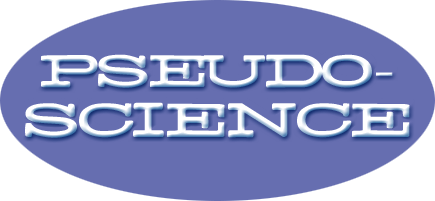 |
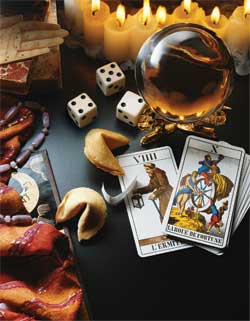 |
Paranormality: Why We See What Isn't There, by Richard Wiseman, MacMillan, London, 2011. [Highly recommended!]
Pseudoscience and Extraordinary Claims of the Paranormal– A Critical Thinker's Toolkit, by Jonathan C. Smith, Wiley-Blackwell, MA, 2010.
The Skeptic's Dictionary, Robert Tood Caroll, John Wiley, NY, 2003.
The Encyclopedia of the Paranormal, ed. by Gordon Stein, Prometheus, NY, 1996.
Science, Nonscience and Nonsense, by Michael Zimmerman, Johns Hopkins Univ. Press, MD, 1995.
Exploring the Unknown, Charles J. Cazeau, Stuart D. Scott, Jr., Plenum, NY, 1979.
Nonsense on Stilts, by Massimo Pigliucci, University of Chicago Press, IL, 2010.
Invented Kmowledge, by Ronald H. Fritze, Reaktion Books, London, 2009.
Fact, Fraud and Fantasy, Morris Goran, A. S. Barnes, NJ, 1979.
Flim-Flam! By James Randi, Prometheus, NY, 1982.
Paranormal Borderlands of Science, Ed. by Kendrick Frazier, Prometheus, NY, 1981.
Science Confronts the Paranormal, Ed. by Kendrick Frazier, Prometheus, NY, 1985.
Science, Good, Bad and Bogus, Martin Gardner, Prometheus, NY, 1981; Avon, NY, 1982.
Science and the Paranormal, Ed. by George O. Abell and Barry Singer, Scribners, NY, 1981.
Extrasensory Deception, Henry Gordon, Prometheus, NY, 1987.
Pseudoscience
and the Paranormal, Terence Hines, Prometheus, NY, 1988, 2003.
A Beginner's Guide to Scientific Method, Stephen S. Cary, Wadsworth, NY 1998 (2nd Ed.)
“State of Denial,” various authors, The New Scientist, 15 May 2010, pp. 35-45.
Internet resources for identifying and evaluating pseudoscience claims can be found here. Other good, short summaries of symptoms and signs of pseudoscience and quackery are to be found here, here, and here. A discussion of the relation between science literacy and pseudoscience is here. Why science illiteracy rapidly increased between 2000 and 2010! Is religion the greatest enemy of science literacy? Are college science courses the only hope for science literacy improvements in the US?
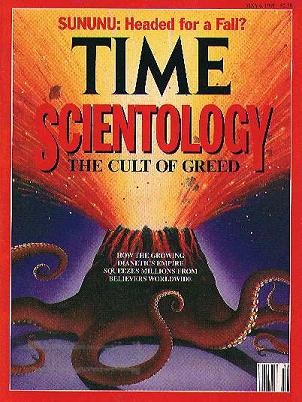 |
The partitions between pseudoscience and religion are tissue-thin, and it is not unusual for a pseudoscience to evolve into a religion, or a religion to evolve into a pseudoscience. Science fiction writer L. Ron Hubbard in the late 1940s had a pseudoscientific parody of psychoanalysis, called Dianetics— graduates of the interminable Dianetics courses would become “clear,” and potentially superhuman. But in the early 1950s Hubbard reconfigured and expanded the pseudoscience as a science-fictional religion, Scientology. Graduates of the interminable Scientology courses would become Operating Thetans, with various godlike powers, and the ability to remember past lives going back 60 trillion years. A retrograde path was taken by the Spiritual Regeneration Movement, a traditional Vedic cult that evolved into Transcendental Meditation, which explicitly denies it is a religion, and offers interminable courses that promise you will someday be able to levitate and fly, walk through solid walls, become invisible, and develop pretty much all the same godlike powers promised by Scientology. Somehow nobody ever “graduates”— they just keep taking more courses, and the cash keeps flowing into the coffers of these two large and greedy groups.
